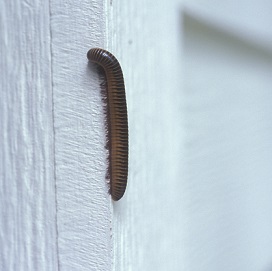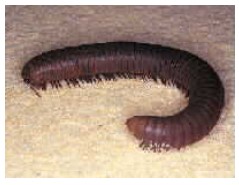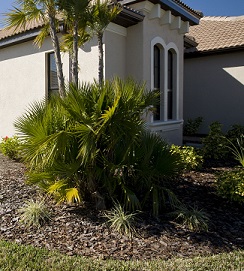
Excess Moisture Brings Pests Indoors
With the abundance of rain we have received this summer and fall, some residents of Indian River County are seeing a surge in household pests along with all that moisture.
A few of the pests which come indoors during and after excessive precipitation are:
- Ants
- Earwigs
- Pillbugs & Sowbugs
- Amphipods or “lawn shrimp”
- Wire Worms (especially in pools)
- Centipedes
- Millipedes
The Thousand-Leggers

Of these, by far the millipedes, Chicobolus spinigerus, or “Thousand-leggers”, can be the most disconcerting. Nearly two inches long, their cylindrical bodies are segmented, with most segments having two pair of legs. These pests are harmless to pets, humans, and furniture, though they can be quite frightening when encountered crawling up the walls of your home. They will coil up when disturbed and may even emit a foul odor. Millipedes sometimes migrate indoors in large numbers to escape water-logged soils.
Though millipedes are NOT technically insects (adult insects have only six legs), these arthropods can be quite a nuisance in the home. When the soil outside the home gets too saturated, they cannot breathe properly and seek a place which is less wet. They squeeze in through cracks in the walls, under sliding glass doors, and through window and door gaps to find better conditions. Sometimes even coming in under screen doors when the house is open for the more pleasant fall weather.

What Do They Eat?
The trick to keeping millipedes, and other pests, out of your home is in understanding what they eat. Millipedes, much like snails and slugs, eat decaying vegetation. Leaf litter, tree mulch, compost, grass clippings, and rotting fruit are favorites of these creatures. Millipedes can usually be found under large plant pots, boards lying on the ground, rocks, and similar damp, covered areas where they can eat in moist peace. In the fall, when fallen oak leaves begin to accumulate up against structures, it can encourage millipedes to come closer to the home. Tree mulch up against or near the house is another millipede enticement, encouraging them to seek shelter in the nearby house when outdoor conditions are not to their liking.

Say “NO” to Mulch Against the House
It is NEVER a good idea to surround your house with tree mulch touching the home, which might also attract termites. If you feel you must have a ground cover near a structure, you may use rock or stone on top of a good landscape weed barrier to discourage weed growth and insects. Then try and keep the rocks blown free of fallen leaves and debris. Or just bare dirt from the house to the drip line of the roof is fine as well. Another option is artificial turf, a permeable surface easily blown clear of leaf debris.
For more research-based information on common household pests related to seasonal moisture, please see the University of Florida’s (UF) Electronic Data Information Source (EDIS) publication ENY221: “Pillbugs, Sowbugs, Centipedes, Millipedes and Earwigs” at https://edis.ifas.ufl.edu/ig093. And SP149: “Pests Associated with Mulch and Moisture“, https://edis.ifas.ufl.edu/in030.
To learn more about groundcovers near the home and around the landscape, please see the list of UF/IFAS EDIS Groundcover publications topic page at https://edis.ifas.ufl.edu/topic_ground_covers.
UF/IFAS EDIS also has a topic page for mulch related publications including options such as rock, rubber mulches, treated mulch, artificial turf, low-growing plants, and turf grasses: https://edis.ifas.ufl.edu/topic_ground_covers
Not sure about what critter has invaded your home or garden? Contact your County Extension Service for help in identification and control measures available to homeowners. Indian River County residents can email the Master Gardeners at ircmg1@gmail.com or call 772-226-4324.
 2
2
